Key points about Toto’s Africa
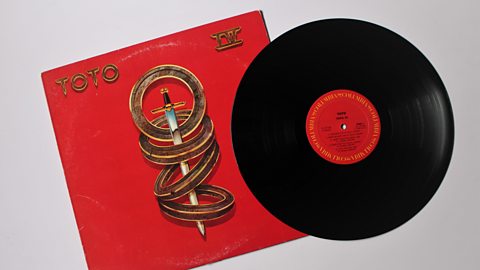
Africa by the American rock band Toto, is the tenth and final track on their fourth studio album Toto IV which was released in 1982. Africa was written in 1981 by band members David Paich and Jeff Porcaco.
In 1982, Africa was released as the third single from the album through Columbia Records. It reached number one in America in 1983 and also achieved a place in the top ten in the UK, Canada, Ireland, Netherlands, New Zealand and Switzerland.
The song is written in a soft rock style, popular in the 1980s and features synthesised sounds which were also typical of this time.
Toto is a rock band comprising lead and bass guitars, synthesisers, male lead and backing vocals and drum kit with additional percussion.

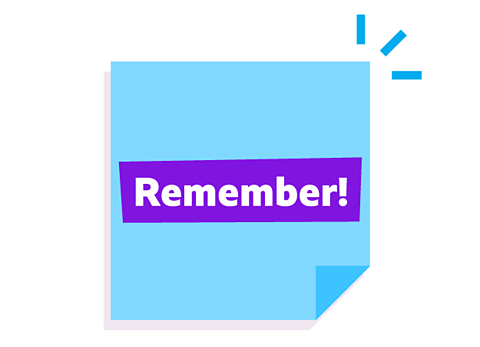
Remember
Africa is the second largest continent and includes 50 countries. It’s important to remember that the styles of music and instruments used will vary depending on the country of origin and its musical cultures.
Video
Watch the video below to find out more about the structure, vocal and instrumental features of Toto's Africa.
Presenter: Toto's Africa was written by band members David Paich and Jeff Porcaro in 1981. This soft rock hit was number one in the US charts in 1983. The song has a simple verse chorus structure. It's moderately fast and the texture is mainly homophonic, which means it's composed of a melody with accompaniment. The intro builds up from two riffs.
Let's hear them.
Riff A features a syncopated three chord pattern A major. G♯m, C♯m. Riff B is an ostinato rhythm based on the E major pentatonic scale, one of the most versatile scales in pop music.
You can hear the African thumb piano and the marimba.
Now let's add some vocals.
Here's verse one.
Singer: I hear the drums echoing tonight, but she is only whispers of some quiet conversation.
Presenter: You can hear that the melody moves mainly in steps, so it's conjunct and it's highly syncopated going across the beat.
Singer: …wings reflect the stars that guide me towards…
Presenter: It changes in verse two, featuring a major sixth leap.
Singer: I seek to cure what's deep inside.
Presenter: Unusually for a pop song, the recorder features with a descending counter melody over the rock band.
Singer: I know that I must do what's right. As sure as Kilimanjaro rises, like Olympus above the Serengeti.
Presenter: The band also includes a drum kit, percussion, bass and lead guitars, synthesizers and vocals. The chorus repeats four times and features a melisma. That's where you sing lots of notes to one syllable.
Take it away.
Group: It's gonna take some time to do the things we never had.
Presenter: African and Western styles. For example, the Western verse chorus structure and instrumentation fuses with African ostinato rhythms, syncopation, pentatonic scales and polyrhythms.
Let's have a listen to the ostinato layers that create these polyrhythms.
Hear the quavers with syncopation?
Add an electric guitar riff to close and all these features work together to create a unique sound, making this a global smash hit.
Question and answer
What is the meaning behind the song's lyrics?
There are many interpretations of the meaning of the lyrics to Africa. In 2015, Paich explained that the song is about a man’s love of the continent of Africa, as opposed to a personal romance.
Structure
The song is in a verse-chorus form and is moderately fast. Here is the structure and features of note below:
Intro - Bars 1-4
Tonality: B major
The two main riffs are presented:
- A chordal riff of A- G#m-C#m in a distinctive rhythm which is syncopated.
- An ostinato pattern in fourths based on the E major pentatonic scale over a sustained chord.
The synthesisers are prominent here. As well as playing the opening chords, another synthesiser emulates sounds of a kalimba, a thumb piano which is traditional to the Shona people of Zimbabwe.
The harmony is unusual here for B major, the chords being: ♮vii-vi-ii. This move away from functional harmony was typical of 70s and 80s rock.
The piece begins with eight bars of unpitched percussion, with several rhythmic layers.
The four bars are repeated three times.
Verse 1 - Bars 5-39
"I hear the drums echoing tonight…”
The verses are in B major with a chord sequence which contains few primary chords, again, typical of this style.
The phrase lengths are 9 bars which is unusual, they are normally 2, 4 or 8. This is because riff B begins as the vocal line ends, creating another bar.
There is syllabic word-setting, the vocal melody moves by step and is syncopated. It is placed quite low in the voice.
Chorus 1 - Bars 40-57
The tonality of the chorus is A major. This change in tonality for the chorus is another distinctive feature of this song.
The chord progression is typical of many pop songs, often known as the ‘four chords’ progression:
iv (F#m)- IV (D)- I (A)- V (E)
This changes for the final phrase of the chorus.
The phrases are uneven with the first three lines being four bars long, and the final line being six bars long.
Link 1 - Bars 58-65
We hear the introductory riffs, but this time the four bar pattern is only heard once.
Verse 2 - Bars 14-39
The music is the same as verse 1, with different lyrics. The final phrase is 8 bars long. The melody in the final phrase changes slightly to include some leaps. We also hear a descending countermelody played on a flute-like instrument.
The backing vocals features more in this verse, coming in with “ooohs” and harmonising words at the ends of phrases.
Chorus 2 - Bars 40-57
This is exactly the same as Chorus 1.
Link 2 - Bars 58-65
This is exactly the same as Link 1.
Instrumental - Bars 66-82
This is B major and is 17 bars long – again, an irregular length. The accompaniment to this section is the same as the verse, with the instrumental melody being based on the pentatonic riff in the introduction.
The melody is played on the synthesiser and uses pentatonic scales, played mainly in fourths in the first half. In the second half there is rhythmic variety, with triplets and syncopation.
The vocals return at the end of the instrumental to sing: “Hurry boy, she’s waiting there for you”.
Chorus 3 - Bars 40-92
This is the same as chorus 1 with three exceptions:
- A new electric guitar riff is heard in the last bar of each phrase.
- The phrase “I bless the rains down in Africa” is heard five times.
- In the first, second and fourth repeats of the above, there is a solo vocal improvisation. The first two use the lyrics “I bless the rain,” on which the second time there is melismatic singing on the word “I”. There is also melisma on the word “had”. The final improvisation uses “I’m gonna take some time.”
Outro - Bars 93-96
The musical material is the same as that of the introduction, with some bass improvisation. On the recording, as this section repeats, the texture reduces by instruments dropping out so that only the rhythm track from the very beginning can be heard, accompanied by the bassline.
Vocal features
The lead vocals and backing vocals are used in different ways in this song, giving a variety of textures to the song. The use of voices is summarised below:
| Verse 1 | Lead vocalist sings all of the verse. This is quite low in the voice. The backing vocals harmonise “Hurry boy, she’s waiting there for you”. This emphasises the lyrics and is higher in pitch than the rest of the verse. |
| Chorus 1 | The first line is sung as a solo, the second as a duet, and the third and fourth lines in three parts. The singing is much higher than in the verse. |
| Verse 2 | The lead vocalist opens verse 2, but is joined by backing vocals much more frequently in this verse. There are harmonies on the final words of each of the lines. |
| Chorus 2 | This is the same as chorus 1. |
| Chorus 3 | There are many harmonies in this chorus, especially in the repeating “I bless the rains” with some improvisations. |
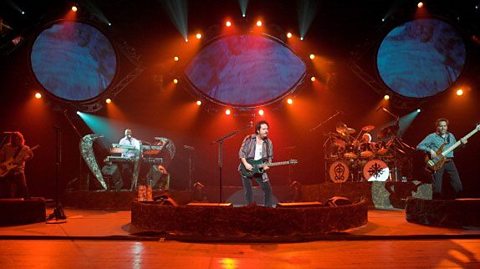

Remember
One of the distinctive features of this song is that the tonality is different in the verse and the chorus. The verses are in B major, whereas the choruses are in A major.
Question and answer
What is the chord progression of the ‘four chords’ chorus?
iv (F#m)- IV (D)- I (A)- V (E)
Instrumental features
The instrumentation of this is a typical rock band with some additions: drum kit with additional percussion and synthesisers.
On the recording of the song, there is an eight-bar introduction, performed only on the unpitched percussion instruments. There are layered rhythms and ostinatos, often found in many African musical traditions. These influences can also be heard in the synthesisers emulating a number of instruments from this continent, whereas the lead and bass guitar represent the Western influences.

Image caption, A group photo of Toto from September 1982 taken in the Netherlands. Left to right - Mike Porcaro, Steve Lukather, David Paich, Jeff Porcaro and Steve Porcaro.
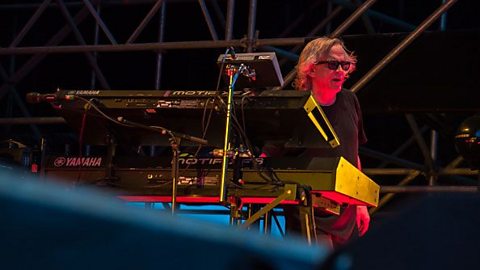
Image caption, The synthesiser is a keyboard which emulates different instruments.
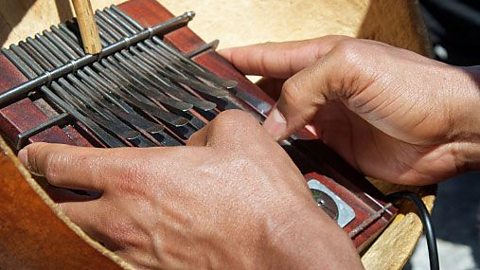
Image caption, The kalimba, also known as a thumb piano, is an instrument in the percussion family which originates in Africa. It consists of a series of wooden bars of varying lengths that are mounted on a box. The player plucks the bars with their thumbs to create a melody. The kalimba sound is emulated by the synthesisers in the song Africa.
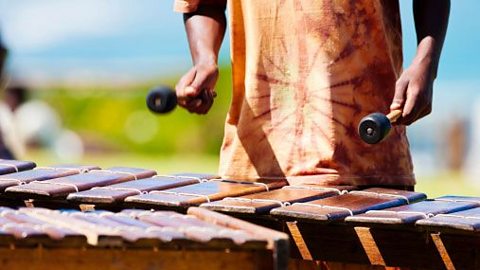
Image caption, The marimba is an instrument in the percussion family which originates in Africa. It consists of wooden bars that are struck by mallets. In the song Africa, the marimba sound is emulated by the synthesiser.
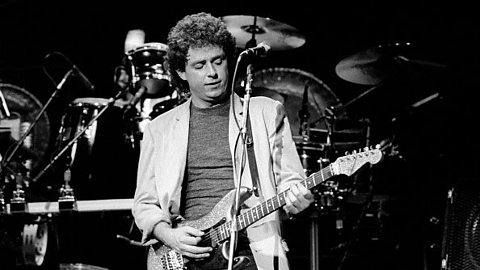
Image caption, The lead guitar was a typical instrument of rock music of the 1970s and 1980s. Steve Lukather was Toto’s lead guitarist and can be heard particularly in the final choruses of the song.
1 of 5

Remember
A synthesiser is an electronic musical instrument which can create and replicate instruments and sounds. In Toto's Africa, it is used to recreate instruments which originated from around the continent of Africa.
Question and answer
Give a definition of the term “syllabic”.
When there is one note per syllable sung.